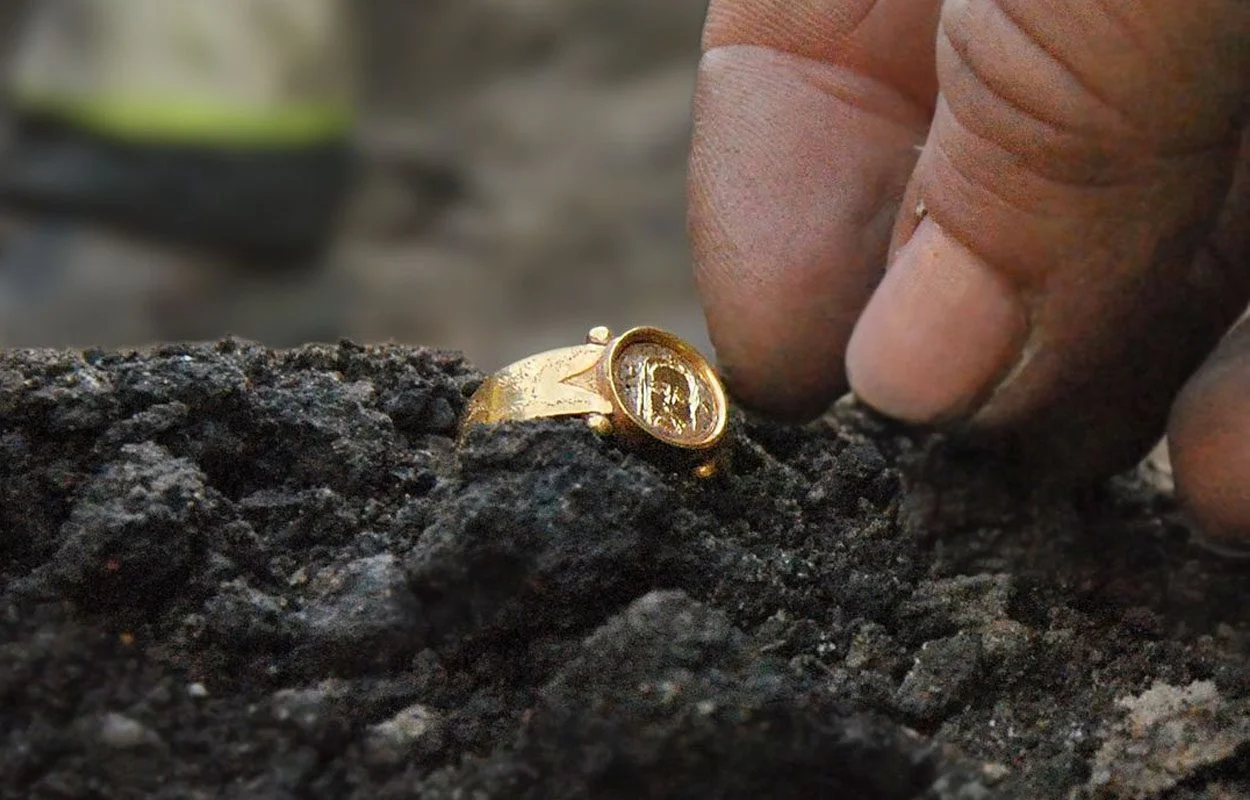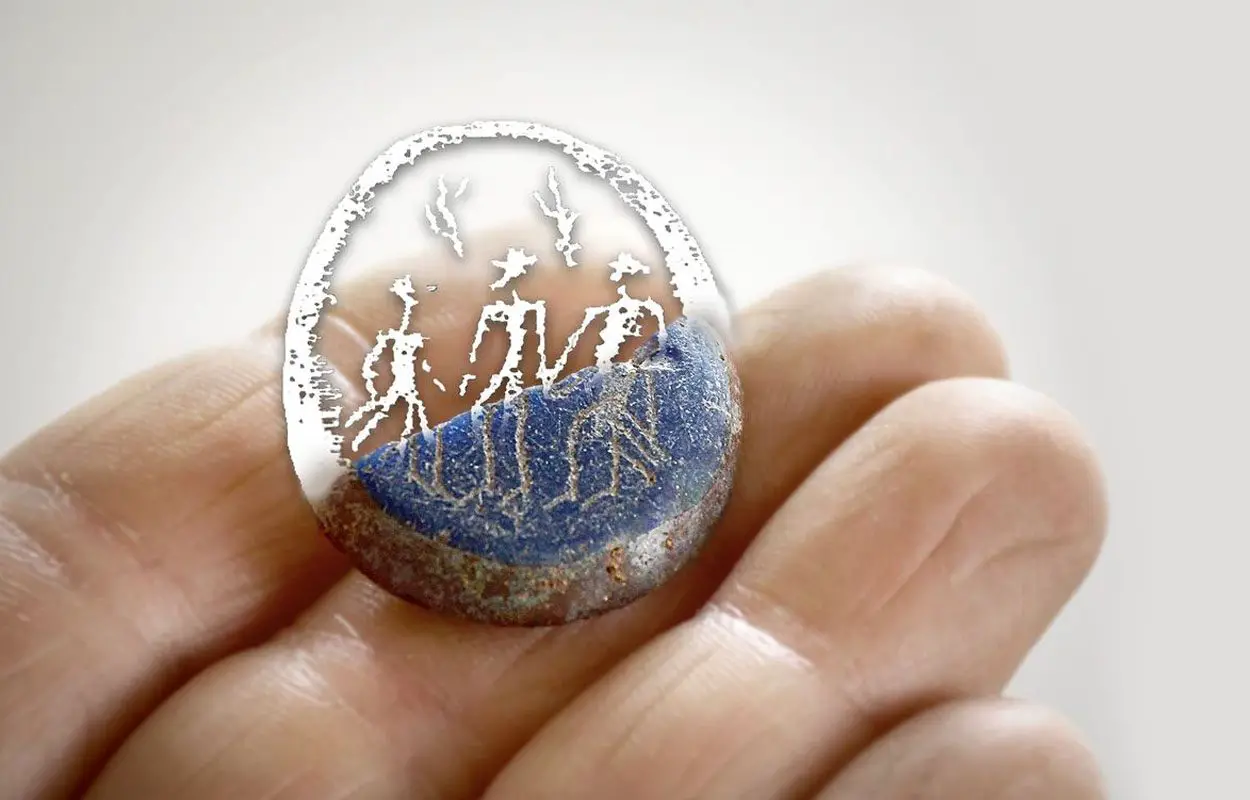A gold ring and glass amulet are among 30,000 objects uncovered during excavations in the city of Kalmar, Sweden.
Archaeologists from the State Historical Museums have conducted a two-year project, during which they have unearthed the remains of hundreds of buildings, cellars, streets, and everyday objects dating back 400 years.
Magnus Stibéus, lead archaeologists, said: “The building remains and the cultural warehouses form a historical archive that holds enormous amounts of information and stories about the political and economic ambitions, everyday life and living conditions of previous generations.”
“We get an insight into large parts of the medieval city and encounter traces of the social and economic existence of different groups; traders, craftsmen, civil servants, church people, poor and rich,” added Stibéus.
Over 30,000 objects have been documented, including a gold ring with a Christ motif and a rare glass alsengem. According to the researchers, the ring dates from the 15th century and was likely worn by a woman. Similar examples have been found in Northern Finland, Östergötland and Uppland.

The discovery of an alsengemet (named after the Danish island of Als) is an unusual find. They are small glass setting stones typically associated with ecclesiastical contexts and were used as pilgrim amulets. The alsengemet dates from the 13th to 14th century and depicts three carved figures.
Excavations have also found traces of the Kalmar War, a conflict between Denmark–Norway and Sweden in 1611 over trading routes and the Sound Dues toll. The team found evidence of burnt farmsteads in connection with the Denmark–Norway attack on the city, in addition to a number of cannonballs, musket balls, pistol bullets, and swords.
Header Image Credit : Arkeologerna
Sources : Arkeologerna – Unique gold ring and amulet among 30,000 objects found in Kalmar





